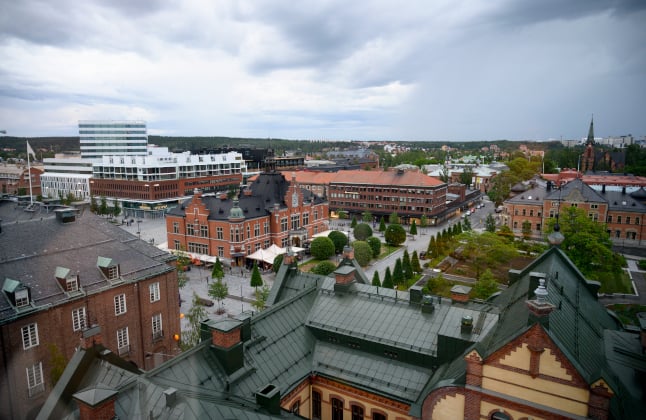UMEÅ
How I used fake sun to beat the winter blues
The Local's northern Sweden reporter Paul Connolly, has strapped on his sunglasses and paid a visit to an Umeå sun room, in an effort to combat the region's long, dark winter.
Published: 29 December 2014 14:12 CET

Sunglasses photo: Shutterstock
As much as I love northern Sweden, the mid November to late January period can be rather dark. At this time of year the sun hauls itself above the horizon at around 9am, describes a low arc across the tops of trees, and then slinks away as if exhausted by the effort at around 2pm.
During years when we’re lucky enough to have early snowfall, this isn’t too dispiriting, as the snow brightens up the whole landscape and reflects back and intensifies any available light. In recent years, however, the snow has been reluctant to show itself until just before Christmas. Climate change is making our lives appreciably darker up here.
A lack of daylight causes the body to produce melatonin, a substance that makes us sleepy and lethargic instead of serotonin and cortisol, substances that make us feel bright and alert. Too much melatonin can lead to depression.
So, how have the northern Swedes combated this? Many make sure they’re out in nature whenever they have a spare second. Randy, my neighbour, spends time most weekends ice-skating along the frozen edges of our lake, while others are out chopping wood or building and burning bonfires. The northern Swedes need little excuse to get out and about.
But what about those of us who are office or factory-bound and have young children to attend to at the weekends? From where do we get our splash of daylight in mid-winter?
Light or sun rooms are the salvation of pasty-faced office moles. There are several dotted around northern Sweden and we’ve visited one in our nearest big town – the solrummet at Iksu spa in Umeå. Sun rooms offer brightness that is about 10 times stronger than standard light therapy. The Iksu sun room is large, with around 16 sun loungers and a smattering of tables and chairs. You’re advised to bring your sunglasses, swimwear or sundress and a book. The sun room’s "sun" is identical to the real sun but has 60 percent less UV radiation. You can spend an hour a day in the "sun,” although Iksu suggest an initial exposure of only 20-30 minutes.
Once you overcome the strangeness of lolling about in this large artificially lit room with a few strangers, it’s quite a pleasant experience. The “sun” warms your face and you almost feel the rays coursing through your veins awakening the dormant stores of serotonin and cortisol. Oddly enough, though, this new surge of serotonin didn’t make me feel revived instantly. Instead I drifted off a little as the sound system’s ocean waves CD lulled me into a snooze. My girlfriend soon nudged me awake with a hiss familiar from our holidays in Turkey and the Caribbean – “Ssshh, you’re snoring really loudly!” The Swedes around me hardly looked bothered, though, as most of them had also started snoozing.
A few days later, I’m not sure I feel that much benefit, although I haven’t ever really suffered any adverse effects from our dark period up north, so it’s hard for me to tell. Also, I suspect you need to visit a sun room regularly to really reap the rewards of all those UV-A and UV-B rays.
One change is noticeable, however – I have a faint light patch round my eyes where I was wearing sunglasses in the sun room. My neighbours have been looking at me curiously during our encounters as if they can tell if something’s different about me but they’re just not sure what. Next time, I’ll leave the sunglasses at home.
Url copied to clipboard!


 Please whitelist us to continue reading.
Please whitelist us to continue reading.
Member comments